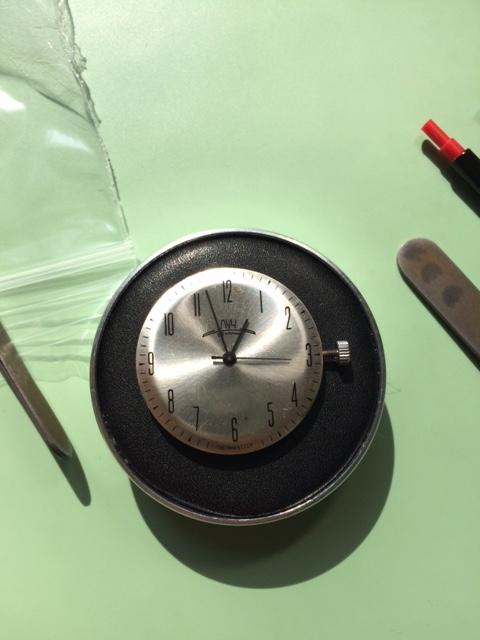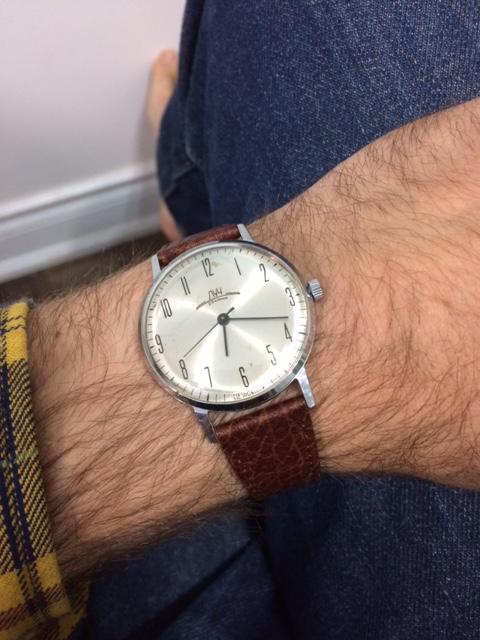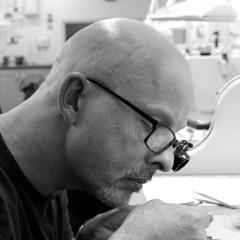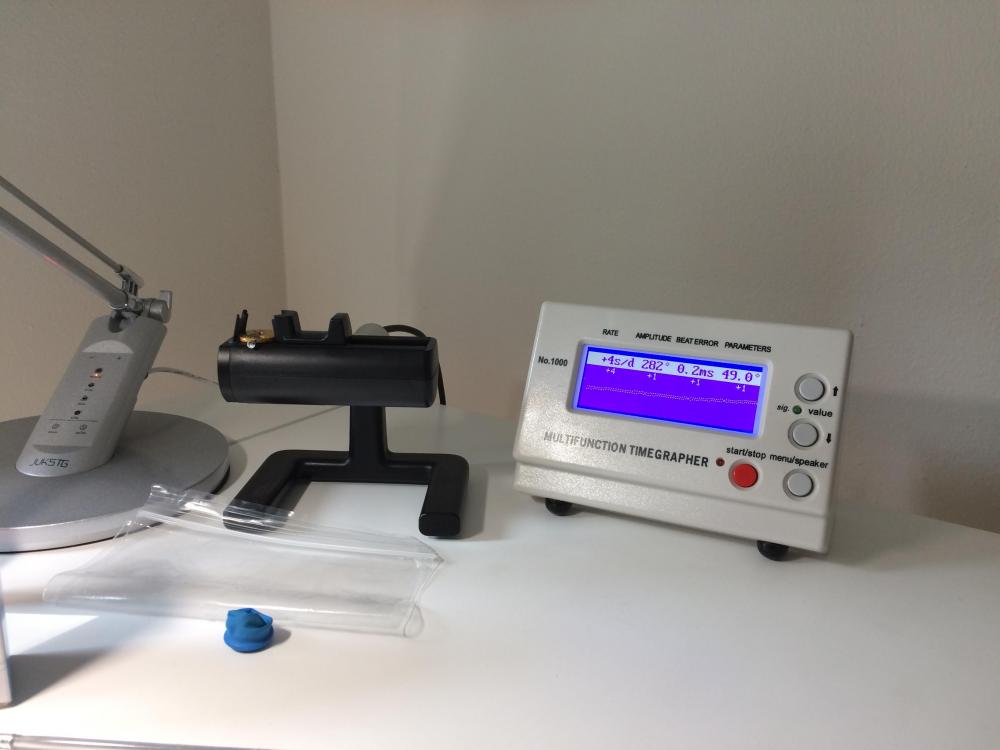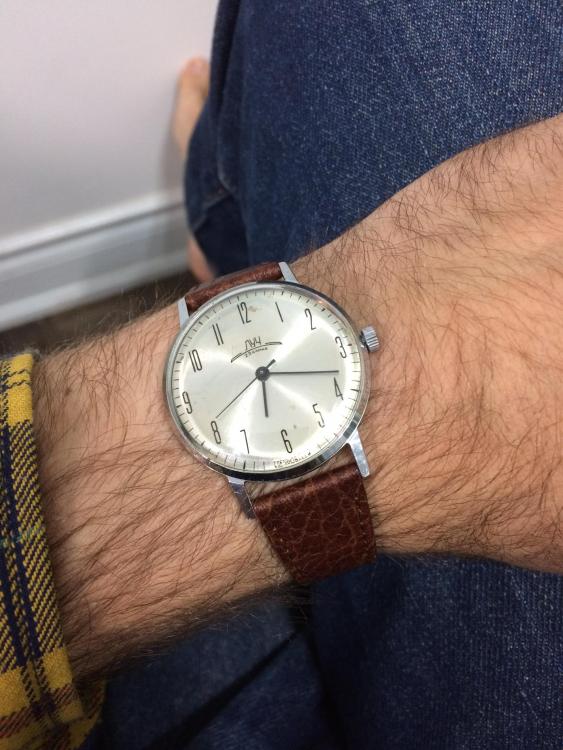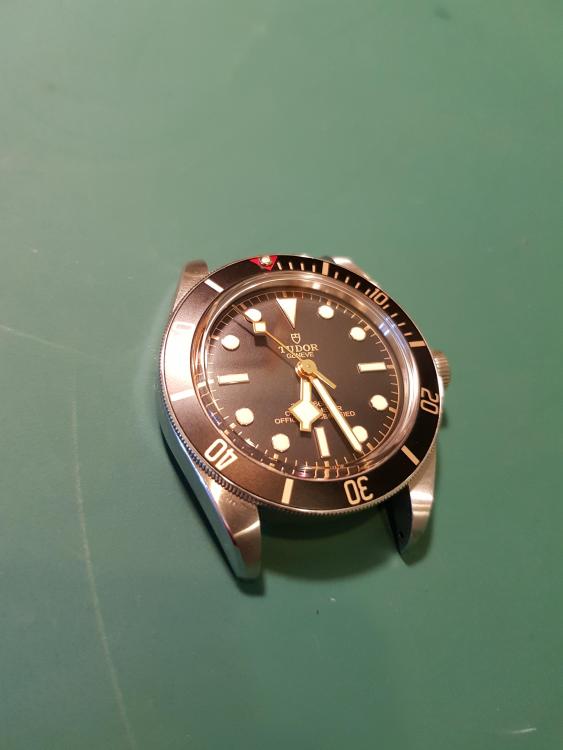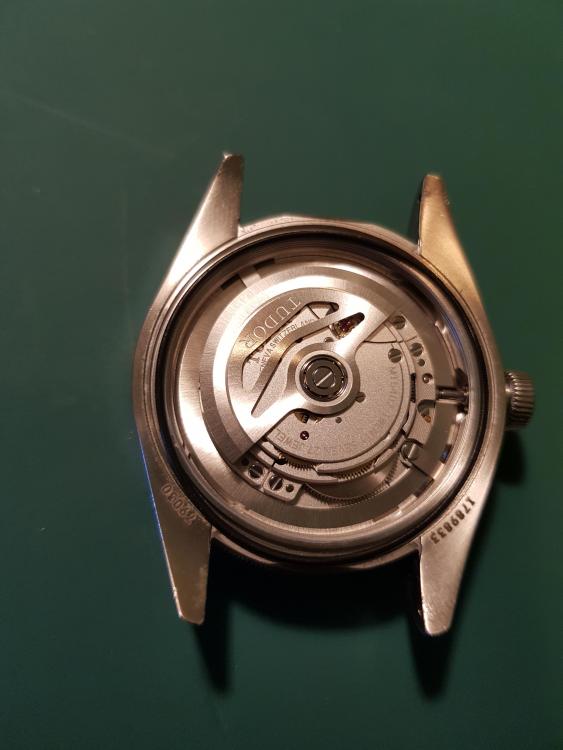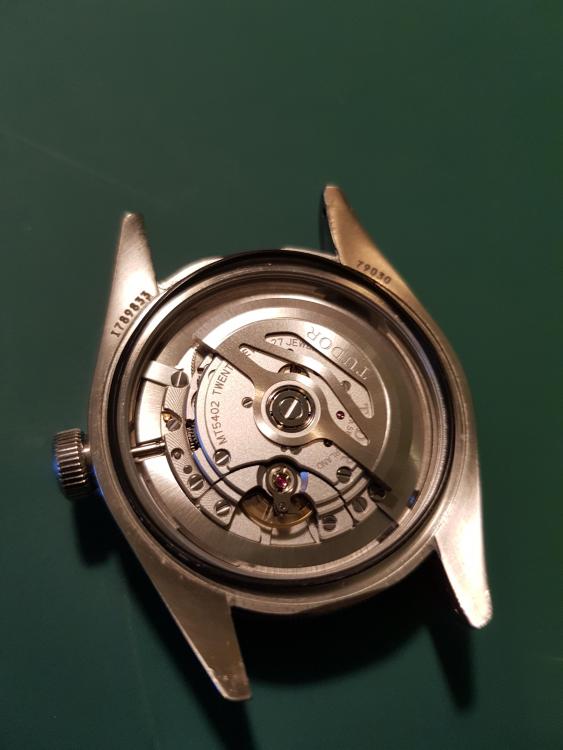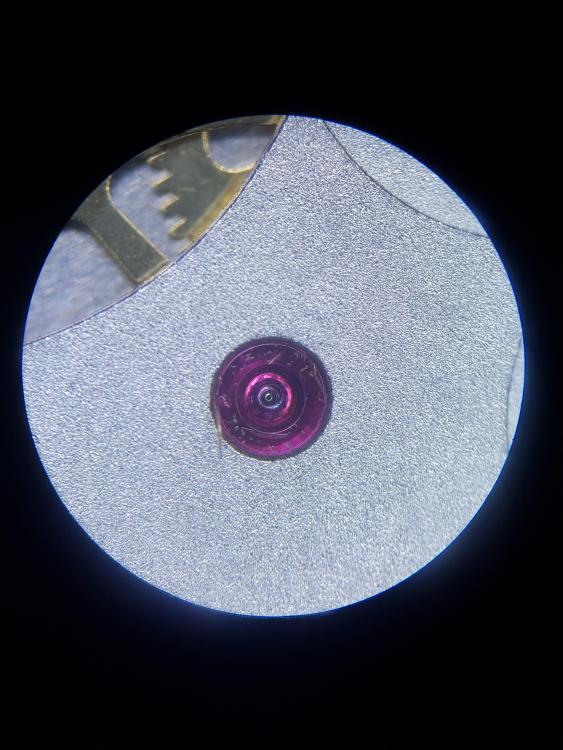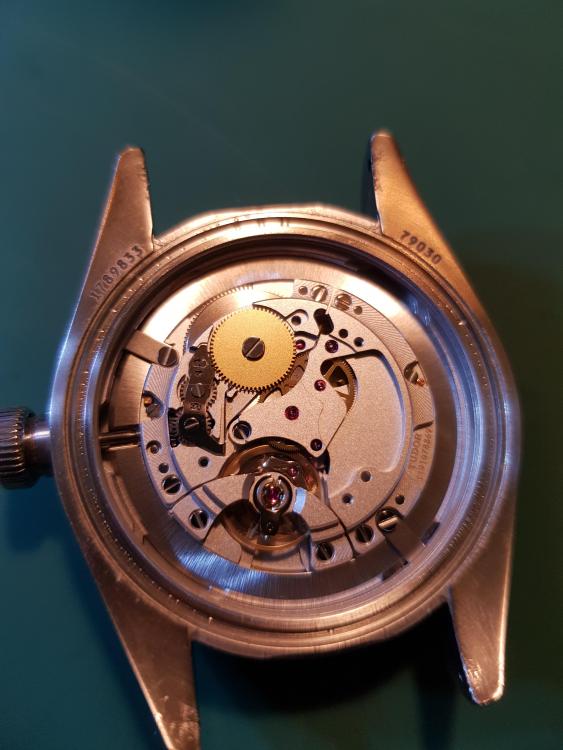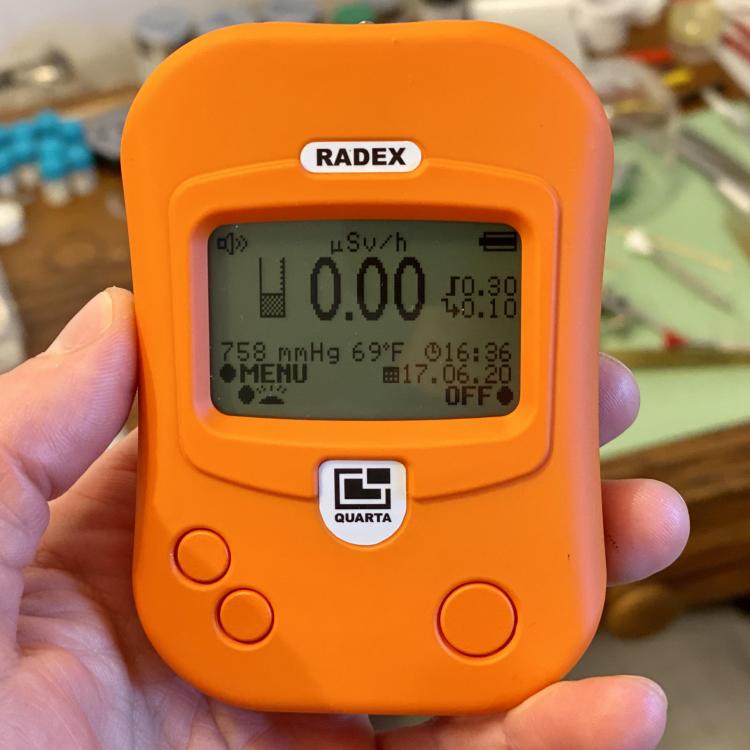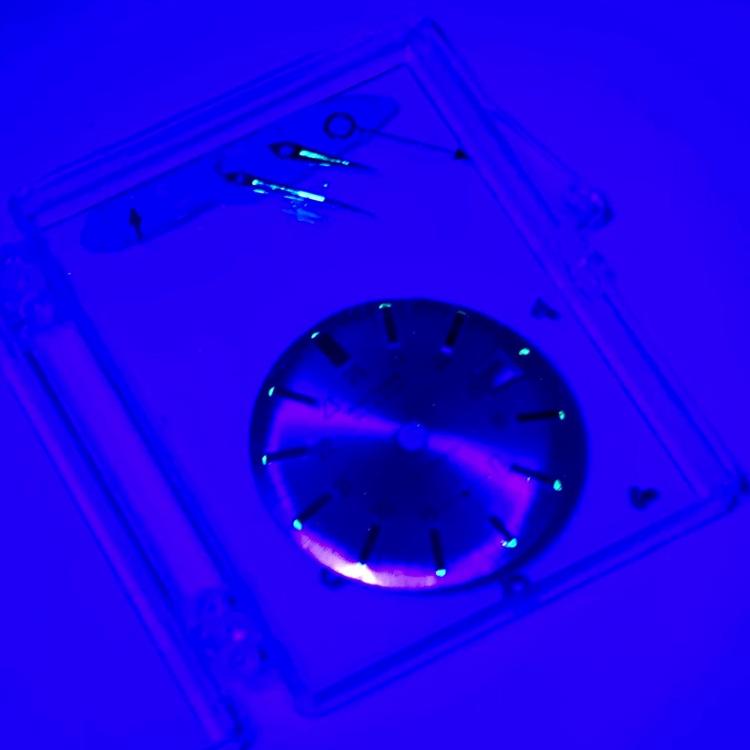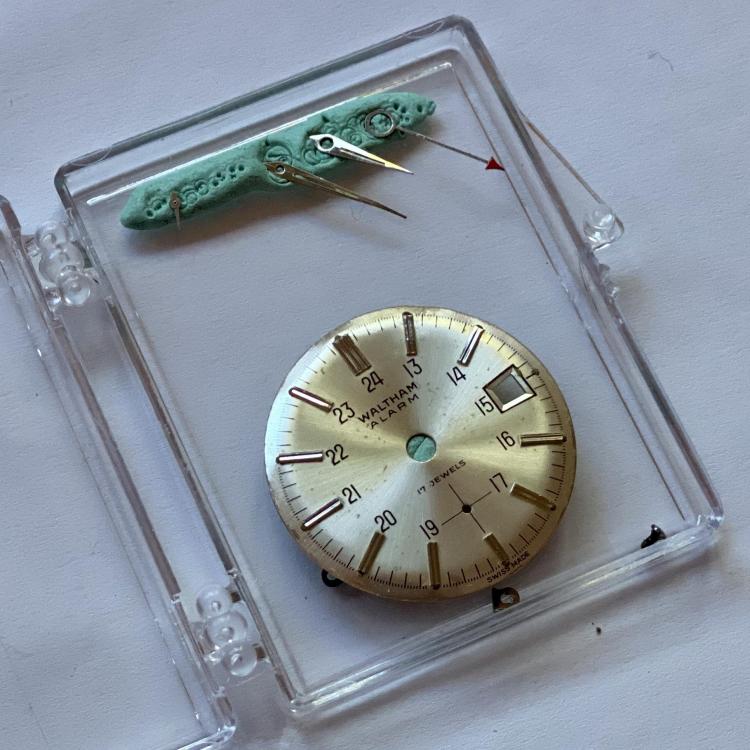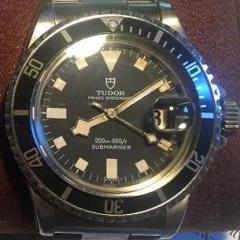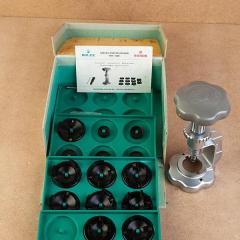Leaderboard
Popular Content
Showing content with the highest reputation on 09/09/20 in all areas
-
Part 3 is a sort of redemption, or at least some lessons learned. The donor arrived about six weeks later (thank you Covid) and I quickly transferred the balance complete. The wavy traces quickly returned. So I stripped the movement again, paying close attention to the barrel arbor bearings. Looking closely, I could see that the barrel had actually been scraping the bottom of the barrel bridge. Manipulating the barrel with the bridge on and the train removed, I could also see that, under torque, the barrel would foul both the bridge and possibly the mainplate. Swapping in the donor movement bridge, the wavy traces continued. The free running of the train was okay with the pallets removed, but, turning my attention to the mainplate barrel arbor bushing, I could see this was slightly out of round. Under torque, the barrel would still hit the bridge. So that was it. I could not close the barrel arbor bearing hole, so after repeated reassemblies and inspections, I became convinced that the original movement was a goner. Thankfully, I had the donor, which I decided to service and install in the watch. In truth, the donor looked to have very little wear - I am unsure what kielbosched it in the first place. I serviced the donor and prepared to install the balance complete. Here tragedy struck again, as it appears that one of the problems in the donor was that the regulator arm was improperly seated in the balance cock, or the pins were just too short. Closing the regulator pins, the hairspring caught the closing arm and became kinked in the terminal curve. Here I finally did Mark's video justice, carefully massaging the hairspring until it was again smooth throughout the curve. A final hurdle: the balance on the donor movement had no endshake - none at all. Having watched Mark's video on unexpected endshake problems, I looked for a shim under the balance cock. Sure enough, Minsk Watch Factory had indeed made a shim under the cock, near the screw, which I had flattened as I had rubbed the tarnished mainplate with pegwood. So I got my screwdriver, and made a painful jab into my newly-cleaned donor movement. Reinstalling the cock, it ran strongly! Hurrah. Here are the results, positive and negative. On the positive, the watch runs strongly and relatively straight in all positions. There is also relatively little positional error (maybe 5-10 seconds a day, but I can live with that). But here's the heartbreaking thing. This donor, this seemingly babied donor with no major signs of wear, has exactly the same problem of wavy traces and variable amplitude as the original movement! It's less pronounced, sure, but it's there - a 15-20 degree variability in amplitude at seemingly random intervals, with the associated wavy lines. A reflection on that below. Battle-ready once again, but not without difficulty. Another charm(?) of the Luch is that the dial does not sit flush with the movement, so you need to be extremely careful when seating the hands to make sure they won't hit the dial. And back on my wrist, at long last. So, a summary. Why should you, an absolute beginner, try to diagnose and fix a battered Russian watch that hasn't been opened since Gorbachev? Well, first, you won't break the bank. These are plentiful, and if you get a plain dial they are cheap as chips. Second, you will use a lot of Mark's lessons. Not just chapter 2, but 3 as well. I watched every single video repeatedly, and tried to apply them all. If not for his video on barrel arbor bearing wear, I would never have found the problem. Last, I practiced a lot - a lot - of skills. I'm still bad, but getting this Luch back on my wrist has made me feel like I'm on the road to being a real watchmaker, whatever that means. And why should you avoid articles like this? One reason: poor, inconsistent build quality. From the shim, to the regulator pins of incorrect length, to the badly-seated dial, it doesn't take a George Daniels to see that these things were absolutely slapped together. This makes them hard to work on and diagnose. And even when you find a good donor that was seemingly retired after only a few years in service, you may find that it has the same fundamental problems as the donor you thought was deeply, unusually defective. So just live with it, and know when good is good enough. Don't make perfect the enemy of the acceptable, because they sure didn't when they built these things in the first place. So that's it. If you're exceptionally patient or you didn't have anything better to do tonight, thanks for reading this far. And thanks to the people on this forum for helping me out with this project - I am very glad I joined. Cheers!4 points
-
Was late trying to complete a repair and was tired. Got the Keyless works done and only thing left was the Pallet fork and the Balance complete which I didn't have installed yet. Started to wind the watch but was not getting any resistance from the mainspring. I stop and though was did I do wrong. So I pull the mainspring bridge back off, took out the the barrel, pop the lid and took a look at the mainspring, looks good, what the you know what's going on. Got everything back together then it hit me , you dummy the Pallet fork not in yet to hold the power. Moral of the story "No more work after 10pm.3 points
-
3 points
-
2 points
-
Been. There. Too many times to count. The worst is when the late night project is a car you need the next morning to get to work. Me and a friend once spent way too much time, and all the swear words available in both our native languages on an oil change (there were other tune up things, but the oil change is what did us). However many HOURS into trying to remove a stuck oil filter, it turns out we were turning it the wrong way.2 points
-
Great write-up! The wavy lines you have on the end movement is not uncommon on these watches. It's more than likely a fluctuation of power output in how the wheel teeth and pinions mesh and as there are so many of them in the train (as you have the two intermediate wheels with their own bridge driving the double third wheel). A little too much end or side-shake, or a slightly bent arbor and you get the wave, or even a badly tarnished pinion leaf or three, that causes a slight bind. A lot of these come with a thin berrillium bronze/brass shim under the balance cock which someone may have left off, which doesn't help when trying to get the correct end-shake for the balance.2 points
-
2 points
-
2 points
-
Well I got a Radex RD1212-BT Outdoor edition - obviously so I can take it off roading in a hurricane. Actually it was nominally more expensive than the base model but offered with next day Amazon Prime delivery. Fired it up and tested it on my suspect dial...nothing. Nothing at all. Well, it did indicate 0.10 background radiation. I suppose that's good but part of me was hoping it would indicate Radium just so I could see it work. But this poses a question for me - this particular device only detects Beta, Gamma, and X-Ray. NOT Alpha. I'm no nuclear scientist so here comes my dumb question: do I need a geiger counter that detects Alpha particles to determine if I have a Radium dial?1 point
-
1 point
-
I like the raketa 2609ha. It just might be my favorite russian movement. You can usually get good amplitude out of them and the moveable hair spring stud makes it easy to adjust beat error. I am not so fond of the 2609 however. Maybe the ones I have run across have been overly worn but I just dont seem to have the same luck.The Achilles heel of the raketa has got to be the case.As for the vostok,I will take a 22xx over a 24xx any day of the week and twice on Sunday. The vostok cases in general seal better than the raketa while movement quality is similar.1 point
-
I have worked on a lot of Russian watches over the years and have to say that I have generally been fairly impressed by the mechanics, but disappointed by the cases and dials. As far as the movements are concerned, these were often to be found in relatively low value watches here in the UK. One of the best examples that I can think of was the Raketa 2609.HA in a chrome or gold plated snap back case re-branded as Sekonda in the 1970's and '80's. One of their advertising tag lines was "beware of expensive imitations", and they would point out that you could get a complete new Sekonda for the price of a replacement crystal on a Swiss watch. As with a lot of inexpensive watches the cost of servicing would have been disproportionately high compared to the price of the watch so servicing was rarely carried out. And as with any watch that gets used day in, day out without proper maintenance it starts to wear out. And this is the state that these watches are often found in today. I would suggest that the excessive wear in the barrel arbor bearings in the main plate and bridge is more due to poor maintenance than it is poor build quality in the first place.1 point
-
you don't have to have ancient watches to have radium. I was looking at a hand assortments these are brand-new hands on pieces of paper so each of the hands are Nice and separate notice that some of the hands which I assume have radium have actually darkened the paper behind them. But the brand-new hands that obviously have been around for a while. the best approach would be to not clean up your radium. Think of radium as a sleeping Tiger it would be best to keep it sleeping. If you start to clean it usually require chemicals solutions rubber gloves you going to end up with a lot of radium spread all over the place and it's still radium. It'd be just best if you left it alone. I guess a better question would be not so much for watchmakers handling units because there is a conceivability when putting the hand on having her face so close maybe you breathe in a particle. But what about the consumer? Are there any documented cases of someone wearing a wristwatch and getting cancer? Think of all the years we had watches with radium hands that are still out there with radium how many cases of cancer? Or I was trying to think what would give us the best exposure to radium to try the experiment not really? Dollar watches especially those with glow-in-the-dark hands that would probably be the most radioactive thing you would have because the hands of the physically be bigger lots a radium and you're probably carrying it in your pockets. So how many cases of cancer from that is there anything documented at all? maybe ignorance is good if you don't know their radioactive then you don't have anything to worry about. But if you'd like to worry I have some a link.. if you look at the link the watch on the left isn't that a pocket watch with a really big hands? But maybe we got an answer from the link? Notice they're not concerned about you carrying the pocketwatch in your pockets that are not concerned about wearing it on the wrist there only concerned about the other effect of having radium or specifically exposure to radon https://www.kingston.ac.uk/news/article/2068/15-jun-2018--second-world-warera-wristwatches-could-pose-cancer-risk-due-to-radon-exposure-according-to/ this link is interesting in that a point out the evils of radioactive materials especially those people who look their paintbrushes but you get to the bottom of the page and? As long as you leave your radium stuff alone and don't poke at it or don't try to clean it up yourself your fine. So they don't seem to be upset about wearing a radium watch in an article where they're concerned about radioactive stuff. I guess if you're really worried about your radioactive hands put them somewhere safe otherwise don't worry about it but definitely do not try to clean it up yourself maybe can find a modern replacement https://www.epa.gov/radtown/radioactivity-antiques1 point
-
Yes as in working in a factory for many years or using it as make-up as the poor "radium girls" did. Worried buyers like periodically show up having absorbed already a detectable amount of paranoia. There is no way one can get sick/affected/slightly glowed by handling an old set of hands. If you don't believe that search medical journals on the matter - radium is a carcinogen but quantity and length of exposure do matter.1 point
-
One wide enough and with the tip shaped so it won't slip. As long only fingers on the shaft are used there is no danger of damage to the relatively large thread.1 point
-
Doesn't Luch put poljot movements in some of their watches? Google shows several types.1 point
-
1 point
-
I have never messed with a luch,but find other Russian makes acceptable when compare to low end watches made elsewhere.1 point
-
1 point
-
In the USA Otto Frei, www.ofrei.com or Esslinger for new ones, Ebay for used ones.1 point
-
Nice walkthrough Jon,....you learned a lot in a short time...:)1 point
-
That is a beautiful dress watch, can't beleive prices have gone up so much, I bought ten brand new luch in Minsk, for about $6 a piece about twenty years ago, non is as beautiful as this one of yours. I agree with jon, power fluctuation, possible combination of effects from two faults. Regards Joe1 point
-
Just look at this fine clock see how wonderful the Platform work is. A famous maker, there is good detail of the maker and the clock and its working. This is too much for ebay to handle. Anyone got some spare change or deep pockets. https://www.ebay.co.uk/itm/324289423342?ul_noapp=true1 point
-
1 point
-
1 point
-
1 point
-
I think it's a damaged mainspring.1 point
-
Ya I use anything that I can dislove in chemicals, so the rotor can be unscrewed again. Seiko 7009 rotors kept coming loose, runs in the family. Good luck.1 point
-
Nevertheless, having read @HSL's post I'd try to find a replacement bearing or complete oscillating weight. I had a look at CousinsUK.com with no luck but they may still be able to source it for you on request.1 point
-
1 point
-
Though I would share this here mostly for someone new like me who just started in this hobby. I think it be fair to say most of us started with this movement and is the one Mark uses in his watch repair course although it's says ETA the Chinese clone is the same. I used this myself and save me from having to take pictures all the time also show where to lub and what kind. This might have been posted before, not sure. Make sure you have flash player enable . https://www.eta.ch/swisslab/6497/6947.html1 point
-
I’m also into vintage camera equipment but stick to just two cameras these days - an Olympus OM4 and a FED 2 which is a Leica rangefinder copy. Wouldn’t fancy doing camera repair!1 point
-
Below is a video of a Peltier cloud chamber. It gives you the ability to see charged particles emanating from a radioactive source. They demonstrate several objects including the source from a smoke detector and a radium lumed watch hand. It even picks up cosmic and environmental radiation. Fascinating, and pretty eerie to watch.1 point
-
I am, I mean a nuclear Engineer and can assure you, a repairman doesn't intake any worrisome dose of radioactive material, unless you decide to have a radioactive Omlet. Alpha is the nucleus of Neon and absorbs electrons first chance , so it only travels like 5 cm in air. I would keep radioactive luminants out of childerens reach. Most modern luminants are not made of radioactive material. And not practical to protect yourself from background eletromagnetic radiation unless you wear protective clothing made out of materials that shield you from gamma or beta. so, No need to spend money on geiger counter.1 point





